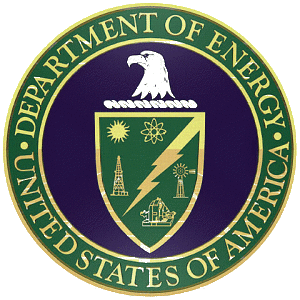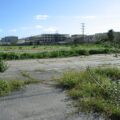 The Joan Trossman BienMiller-McCune Interview with the Department of Energy – August 14, 2009
The Joan Trossman BienMiller-McCune Interview with the Department of Energy – August 14, 2009
(Bien conducted this interview as part of our co-bylined August 24, 2009 Miller-McCune article “50 Years After America’s Worst Nuclear Meltdown – Human error helped worsen a nuclear meltdown just outside Los Angeles, and now human inertia has stymied the radioactive cleanup for half a century.”)
William Taylor is the Cinncinati-based spokesman for the Department of Energy (DOE) Environmental Management Program for the Santa Susana Field Laboratory (SSFL). DOE is responsible for the cleanup of 90-acre Energy Technology Engineering Center in SSFL’s Area IV where the meltdown of the Sodium Reactor Experiment (SRE) took place in 1959. DOE estimates that the final cost of remediating ETEC will be up to $221.4 million.
Joan Trossman Bien: How do you characterize the events of July 12-26, 1959, at the SSFL SRE?
William Taylor: We need to understand that as best we can. We know there was the fuel meltdown. We don’t know how much or if any was released. You talk to the scientists and they say no, the cover gas captured as the system was designed. You don’t know exactly what happened 50 years ago. With the workshop [coming up on August 29, 2009, in Simi Valley], you will get a better understanding. You’ve read reports and the like that people have speculated, and they admit they are speculating, so it is very difficult to determine exactly what happened and , really, we’re talking 50 years ago.
The site survey is by the desire of people to have the US EPA involved. About a year ago, it was July, we were in negotiations to say how we want to do this. Then all of a sudden the EPA said we can’t negotiate with you. Whatever the situation was then, DOE said we don’t agree with that but we’re going to put up money for you, we’re going to put up DOE money to pay for the survey. The impression that nothing has been done is not exactly correct because throughout there’s been an environmental report every year. There’s been work done to determine what [the extent of the radiological contamination] is. Nothing that has been as comprehensive as what the EPA is going to do and that’s why they are going to spend upwards of $40 million to do it.
So what has you gnashing your teeth about, because everyone is in this situation?
Of course. Well, we’re feds; we don’t gnash our teeth. We have to listen to the community and, of course, maybe we’ve not done that as well as we should have in the past. We at DOE Environmental Management Program, and it’s not always been under the Environmental Management Program; it has gone back and forth between different programs. The Environmental Management Program is the one that does the clean up. They are anxious as everyone to clean up what needs to be cleaned up and to do it right.
As things are going along right now, do you expect to hit 2017 as a clean up date?
That was under the old consent order agreement and I don’t believe the new one has been signed. So I don’t know if 2017 still is in play since we are going to wait until 2011 to get the results of the survey.
(EnviroReporter.com editorial note: DOE and NASA signed the draft consent order August 19, 2009 without Boeing’s signature. The Department of Toxic Substances Control subsequently announced a 30-day public comment period on the proposed order.)
Do you know what is holding up the consent order?
I do not.
Has DOE agreed to follow SB 990 or is DOE not signed on to it?
We have stated that we are ready to sign the consent order. With the [American Recovery Act] money, we considered taking down the remaining structures there. Basically people are nervous about that. The public basically gave us, DOE, the indication to wait to the EPA surveys and regulatory things are done so we’re not going to fight that. The public opinion and, of course, the political opinion, too. In any scenario, those buildings are still going to come down. No one can imagine a scenario, even though environmental impact statement always has the walk-away phase; they put a fence around it and walk away. Nobody’s going to do that in this situation.
Do you think that what is there is posing any kind of danger at the moment?
The biggest danger is what is in the groundwater. You can take a tour and walk right in the remaining facilities so probably groundwater is the biggest hazard. There are some controls on it and if there are places where it’s not detected and being controlled, we’re working with DTSC to mitigate those many problems up there.
Is there anything that I have not asked that you would like to add?
There are a lot of things. I appreciate these people who have followed this for thirty years and I understand their frustration but maybe some things aren’t as bad as they seem. There has been some cleanup there. You can basically walk into the remaining facilities without protective gear. There are a couple walls they say not to touch but [they are] not really high radiation hazards. Things need to be cleaned up and we want to clean them up. I know things have been done in the past that probably have not taken into consideration of the people’s concerns around there and we are doing are best to rectify that by working with DTSC, working with EPA now, paying EPA to do the survey. So we are trying to clean it up and work with the communities and get in there and get the job done. There are things that people want done, the EPA survey, and I think we will all look with interest at the survey to see the outcome of that. From there we’ll use that data to finish the environmental impact statement, that was court-ordered, and then we’ll choose the [remediation] decision with public input to determine the final clean up stage.
The focus of the [upcoming August 29] forum is to basically better understand the 1959 accident. We wanted to get independent opinions to ensure that we best understand it. Also, we want to explain to members of the public who are interested because we get a lot of comments from the public. We hear different stories on it. That is the sole objective is to say here are the many sides that we have. We got all the data we could get our hands on and gave to the scientists and physicists and we brought in an independent reviewer to look at it and it’s going to be a public forum, too. So we won’t be saying, don’t listen to that man in the corner; we will let him speak. I’m sure it will be an exciting meeting, as are all of our meetings regarding SSFL The one a couple weeks ago was a calm one.
We found some of the former workers and we think some of them are going to come and we want to give them a chance to speak. And hopefully we can get guys who were scientists and were running the operation and get their side of the story.
24 Years of Award-Winning SSFL/Rocketdyne Reporting
June 1998 – June 2022












Recent Comments